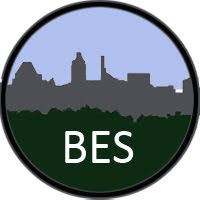Press-Pulse Dynamics: A Hypothetical Feedback Model for Long-Term Social-Ecological Research

An important conceptual resource for BES III has recently appeared online. This publication presents the feedback cycle between social and ecological structures and functions as mediated by ecosystem services and by press and pulse events.
This conceptual framework highlights that the dynamics of press and pulse events is a key link in the integration of social and bioecological processes and structures. A version of the feedback cycle adopted for BES III, and identified by its older label of the Integrated Science for Society and Environment (ISSE) appears as Figure 2 in the BES proposal and in an earlier post on the Web Log. This framework is perhaps really best described as a model template, which can guide construction of more specific, testable models and hypotheses. This paper deserves serious study by researchers and scholars affiliated with BES.
The publication appears in the Ecological Society of America’s journal, Frontiers in Ecology and Environment. Members of the Society and persons at subscribing institutions can find the paper through this Digital Object Identifier: doi:10.1890/100068
The full citation of the online publication is as follows:
Scott L Collins, Stephen R Carpenter, Scott M Swinton, Daniel E Orenstein, Daniel L Childers, Ted L Gragson, Nancy B Grimm, J Morgan Grove, Sharon L Harlan, Jason P Kaye, Alan K Knapp, Gary P Kofinas, John J Magnuson, William H McDowell, John M Melack, Laura A Ogden, G Philip Robertson, Melinda D Smith, and Ali C Whitmer. 2010. An integrated conceptual framework for long-term social–ecological research. Frontiers in Ecology and the Environment (e-View)
A key phrase from the abstract of this article is, “Here, we present an iterative framework, “Press–Pulse Dynamics” (PPD), that integrates the biophysical and social sciences through an understanding of how human behaviors affect “press” and “pulse” dynamics and ecosystem processes. Such dynamics and processes, in turn, influence ecosystem services – thereby altering human behaviors and initiating feedbacks that impact the original dynamics and processes.”
Photo courtesy of University of Maryland, Baltimore County. View from the roof of the Administration Building toward downtown Baltimore.


